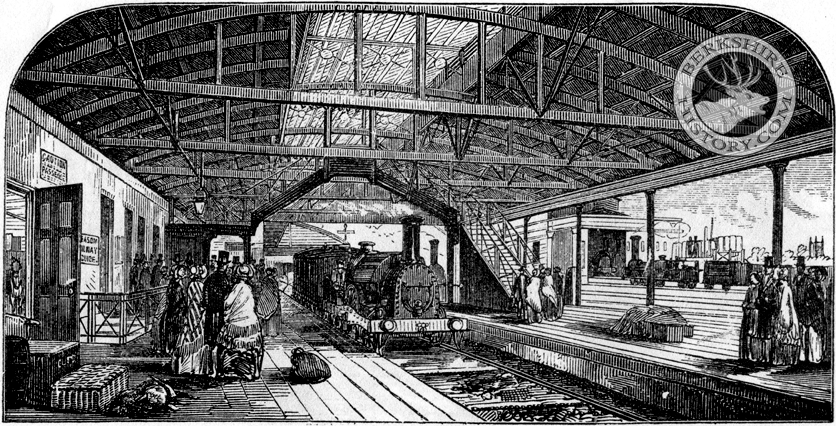 |
 |
|||
|
|

The Railway comes
to Reading On 30th September 1833, there appeared, in the Reading Mercury, a long prospectus or account of a new railway, to be called the Great Western Railway, which it was proposed to construct between London and Bristol. The prospectus stated that the construction of this railway would occupy four or five years, and that it would cost nearly three million pounds (about £150m today). The Mercury was in favour of this important scheme, but there were many who opposed it. Some people thought as London and Bristol were so far apart, and that as they were rival ports, it would be hardly possible for much traffic to be carried on between them. The railway, these people said, would only fill the pockets of the men who were paid to "make it, and must end in failure.” Meetings in Reading were held both for and against the scheme. After a long struggle, an Act of Parliament, authorising the formation of the railway, was passed in 1835. The news was received in Reading with, rejoicing. Work was at once begun. Early in 1837, the long cutting through the high ground near Sonning was being made. The men worked at night by the light of coach-lamps, as well as by day. In June 1838, the railway was opened from London to Maidenhead. Keen interest was taken by the people in the appearance of the trains. The carriages were described as "immense moving houses" and the pace of the trains, which reached twenty-eight miles an hour, caused amazement. It became common for the horse-drawn coaches that ran from Bristol through Reading to London to stop at Maidenhead on their way to London. There the horses were taken out and the coaches were placed on railway trucks. In this manner, with the passengers still inside them, they proceeded by railway to London. Thus, they managed to shorten the journey from Reading to London by about two hours. In June 1839, the line was opened as far as Twyford. By July, the station at Reading was being built. This first railway station at Reading cost £12,000 (about £½m today). At last, on 30th March 1840, the line was opened to Reading. This notable day was marked by special celebrations. An immense number of people came from the neighbourhood to see the first train arrive. Seats for spectators were placed on the station platform and thousands of people stood in the Forbury and on Forbury Hill. The fastest trip made on the first day from London to Reading occupied one hour and five minutes. The trains were met by omnibuses from the Crown and the Bear Inns. In 1844, the Great Western Hotel was opened in order to supply the needs of railway passengers. From this time forward the old coaching inns on the western and southern sides of Reading began to lose importance, for the coaches soon ceased to run, and they were too far from the station to be able to profit by the railway traffic. In 1841, the Great Western Railway was completed as far as Bristol. Partly edited from W.M. Childs' "The Story of the Town of Reading" (1905)
|
|||
| © Nash Ford Publishing 2017. All Rights Reserved. | ||||


